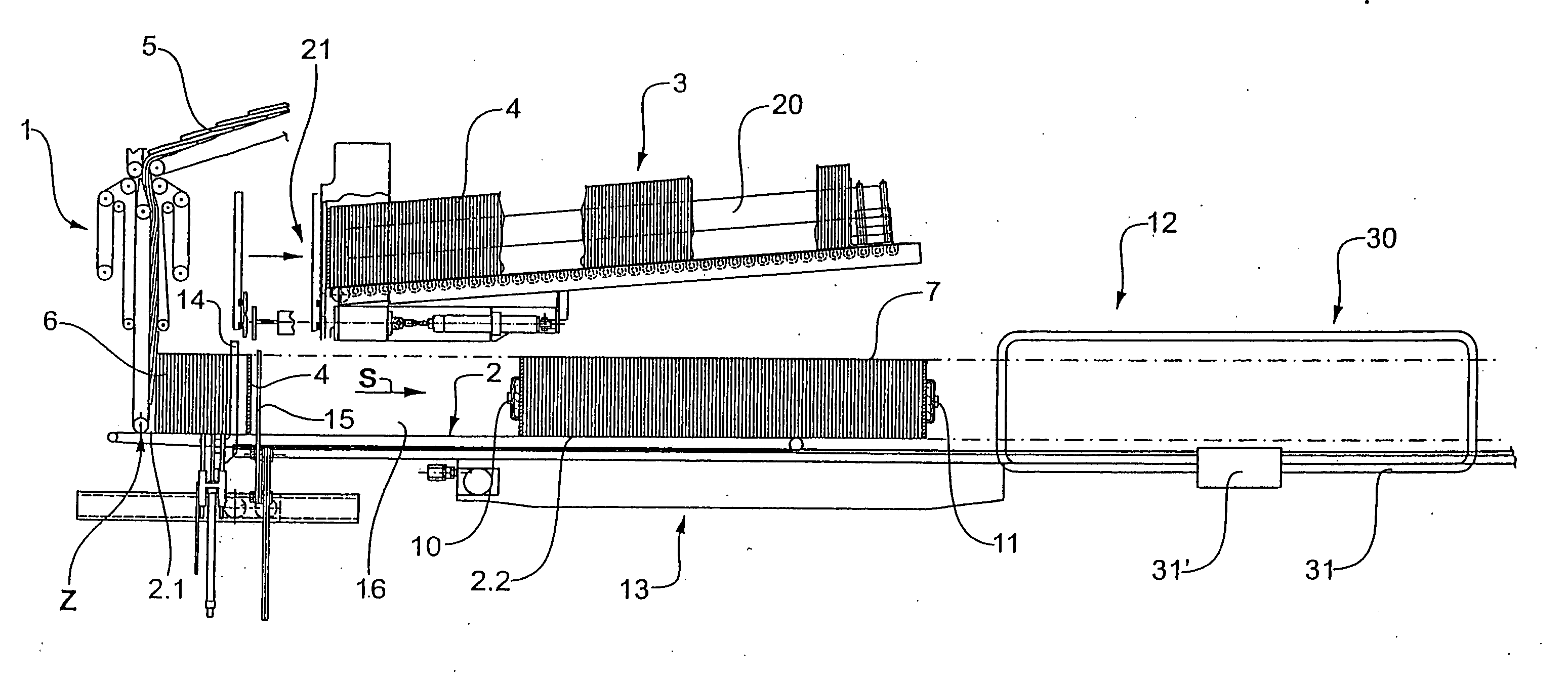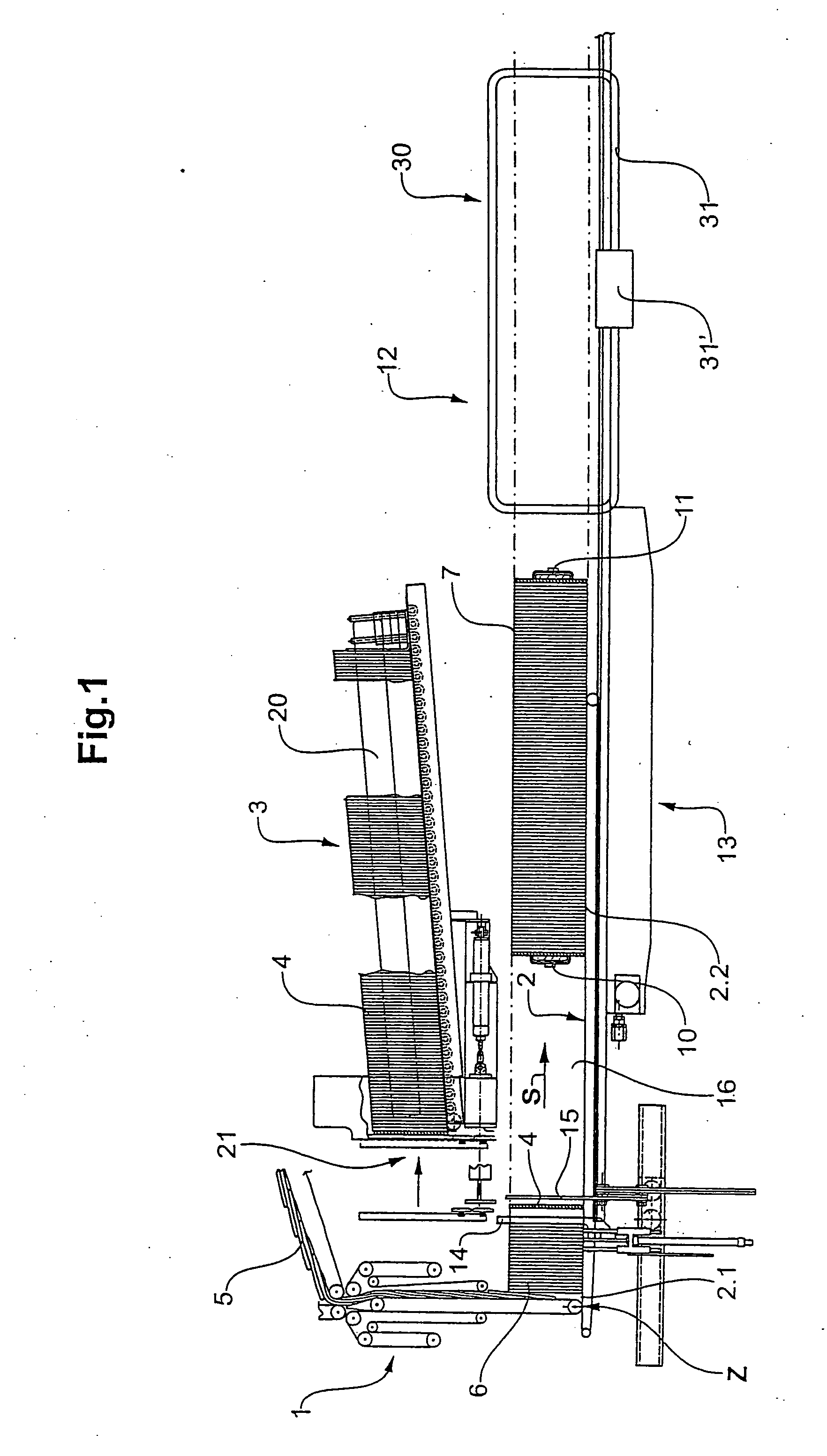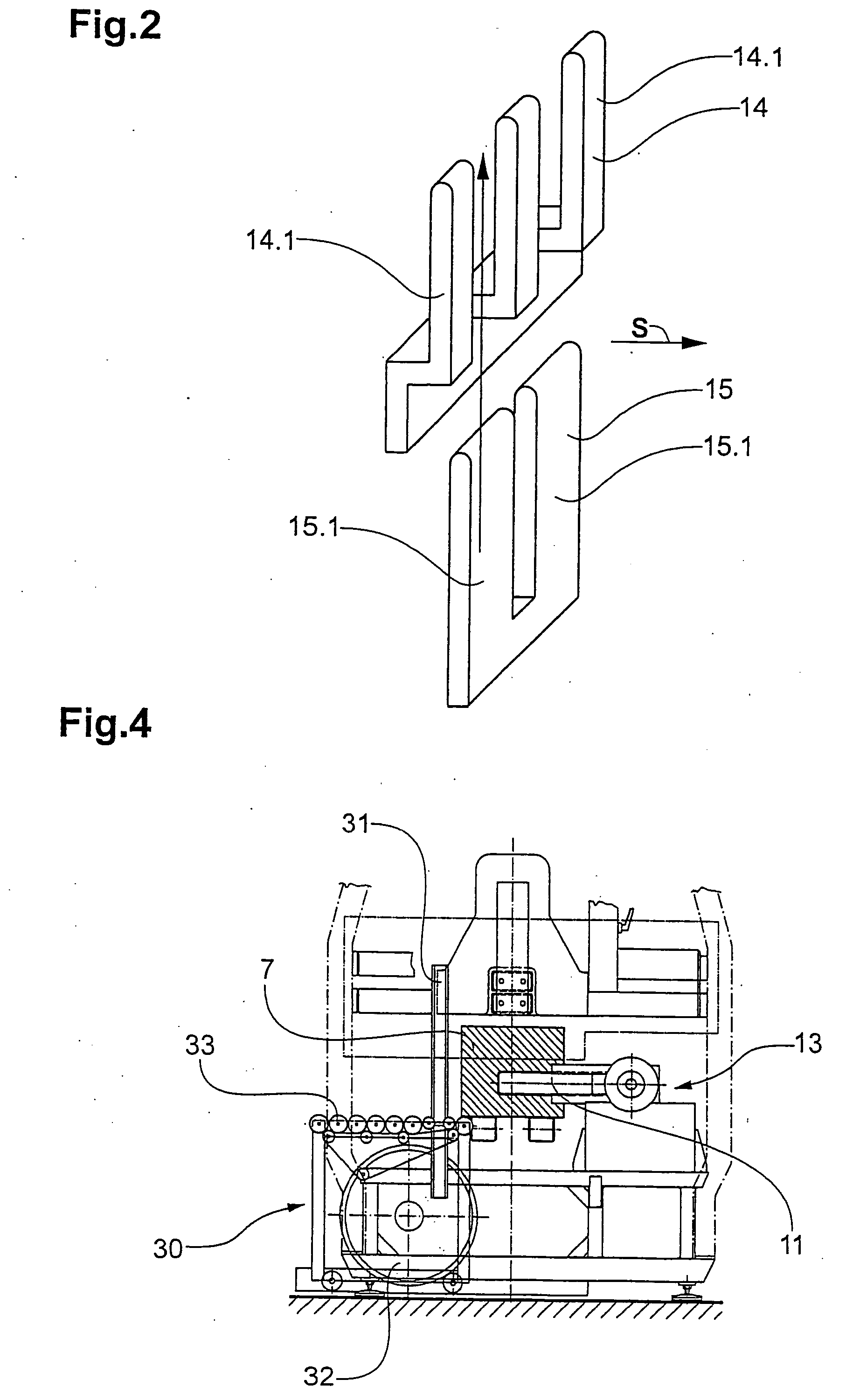Method and device for forming horizontal stacks of printed products and securing said stacks with straps
a technology of printed products and horizontal stacks, which is applied in the field of printing product processing, can solve the problems of unstable stacks without aid, and the inability of the strapping material to place the looping channel, etc., and achieve the effects of increasing capacity, high flexibility, and more tim
- Summary
- Abstract
- Description
- Claims
- Application Information
AI Technical Summary
Benefits of technology
Problems solved by technology
Method used
Image
Examples
Embodiment Construction
[0024]FIG. 1 is a side view of an exemplary embodiment of the device according to the invention. The device comprises in a generally known manner a supply means 1 and a conveying surface 2, as well as a means 3 for positioning the endplates 4. The supply means 1 comprises e.g. a pair of conveyor belts, driven counter-revolvingly, between which an imbricated stream 5 is conveyed from above on to the conveying surface 2 (supply point Z). The conveying surface 2 is e.g. a conveyor belt moving away from the supply point (stacking direction S) or a plurality of conveyor belts operating in parallel and / or in series. It is advantageous to provide a first conveyor belt 2.1 adjacent the supply point Z, which first conveyor belt is operated continuously with approximately the speed of the stack growth and a second conveyor belt 2.2 which is operated with a cyclically variable speed.
[0025] The supplied products line up on the conveying surface 2 to form a continuously growing stack 6, which e...
PUM
| Property | Measurement | Unit |
|---|---|---|
| length | aaaaa | aaaaa |
| length | aaaaa | aaaaa |
| area | aaaaa | aaaaa |
Abstract
Description
Claims
Application Information
 Login to View More
Login to View More - R&D
- Intellectual Property
- Life Sciences
- Materials
- Tech Scout
- Unparalleled Data Quality
- Higher Quality Content
- 60% Fewer Hallucinations
Browse by: Latest US Patents, China's latest patents, Technical Efficacy Thesaurus, Application Domain, Technology Topic, Popular Technical Reports.
© 2025 PatSnap. All rights reserved.Legal|Privacy policy|Modern Slavery Act Transparency Statement|Sitemap|About US| Contact US: help@patsnap.com



